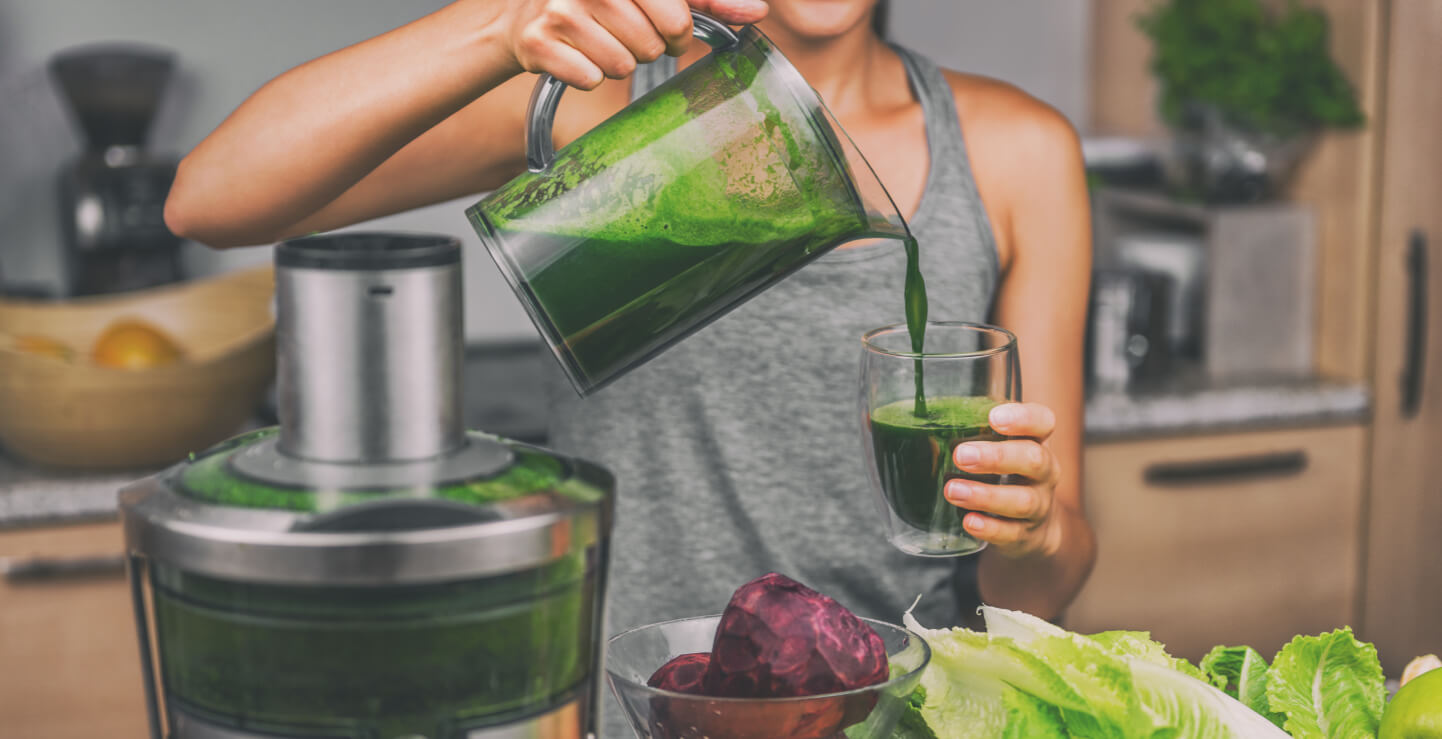Ever thought of “detoxing” or “cleansing,” for weight loss or wellness? Fruits and vegetables are associated with a reduced risk of many chronic diseases, including heart disease and certain types of cancers. However, few of us meet the daily recommended fruit and vegetable intake. Is juice a good way to improve intake? Do trendy cold-pressed juices really boost energy and cure disease? Which claims have merit, and what role can juice play in a healthy diet?
Pro: Getting more produce. “Most people do not consume nearly enough fruit. A combination of whole fruit and 100 percent fruit juice is the most effective way to meet the fruit shortfall, without paying more,” says Adam Drewnowski, Ph.D., director of the Center for Public Health Nutrition at the University of Washington. “For some people, 100 percent juice is the lower-cost option for meeting nutrient requirements.”
Con: Lack of fibre. While drinking your fruits and vegetables is a convenient way to reach your daily produce goals, eating whole fruits and veggies, with their intact fibre, will likely leave you more satisfied. When you eat a piece of whole fruit, its intact fibre slows the digestion of the natural sugars.
When you drink juice, you get sugar without fibre to slow it down.
Pro: Better diet quality. Drinking 100 percent fruit juice is associated with improved diet quality in children and adults, particularly with making sure children, adolescents and teens get enough of key nutrients like vitamins A and C, potassium, folate, and magnesium.
Con: Not all juices are equal. The term “juicing” refers to juice extraction from fruits and vegetables, but not all juices are created equal, and many are not 100 percent juice. Some are thinned or filtered, while juice “cocktails” or juice blends may contain one or more juices, with much of the sugar coming from added sugars. These types of juice don’t offer as much nutrition as 100 percent juice or whole fruits and vegetables.
Pro: Phytonutrient boost. Along with vitamins and minerals, juice may give you a phytonutrient boost. Phytonutrients are compounds made by plants that have antioxidant, anti-inflammatory or other benefits for health. A study in Nutrients found that even 1/2-cup of Concord grape juice per day provides enough polyphenols (a type of phytonutrient) to reduce several risk factors for cardiovascular disease, including blood pressure.
Con: It’s not “magic.” Even though phytonutrients may also support our immune system, the juice isn’t a magic elixir for detoxing or boosting the immune system. The liver needs protein and adequate calories to transform toxins into a form that we can eliminate. Our intestines need fibre to speed that elimination. Also, our gut microbiota plays a role in immunity, and those microbes feed on fibre.
Juicing healthfully:
Like to juice at home or visit your local juice bar? Here’s what you need to know:
- Think supplemental. Use juicing to supplement your daily diet, not as your diet. Juice can be a great way to squeeze in additional vitamins and minerals, but it doesn’t have the fibre, protein, and fat that are also essential for health.
- Keep calories in check. Juice may be full of nutrients, but it still contains calories. How many calories are in your juice? That depends on what’s in it, and the serving size. If you use vegetables in your juice blend, the calories will be lower than if you are drinking pure fruit juice.
- Put vegetables first. When you juice fruit, you get all of the nutrients and all of the natural sugar, but none of the fibre, so the amount of sugar and calories per serving becomes more concentrated (more in a smaller amount). Juicing primarily vegetables like dark leafy greens, celery, and cucumber, then adding a small amount of fruit, like apple or kiwi, or root vegetables (carrots or beets) for sweetness is the better way to go. A hint of lemon, lime, or ginger is a nice touch.
- Don’t ditch the fibre. When you juice, you don’t get the fibre that’s in whole fruits and vegetables, because juicing machines extract the juice and leave behind the fibre-rich pulp. If you juice at home, you can stir some of the pulp back into the juice or use it in cooking. Try adding fruit pulp to muffin batter, or use vegetable pulp when making broth, pasta sauce, or casseroles
Copyright@2019, distributed by Tribune Content Agency. All rights reserved.




